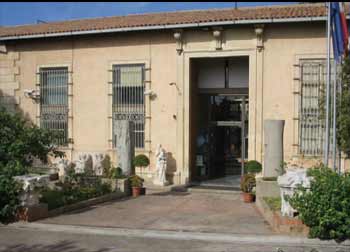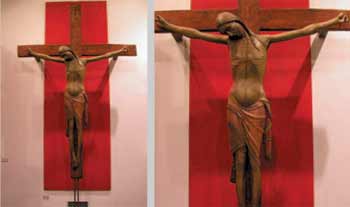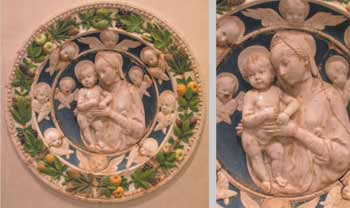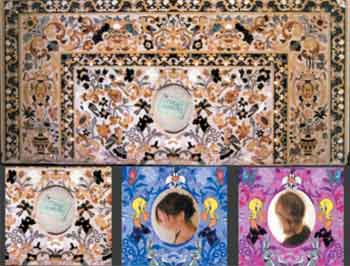
MUSEO REGIONALE
Viale della Libertà 465
tel. 090/361292-3
![]() critical
text by Giampaolo Chillè
critical
text by Giampaolo Chillè
The
three artists' works allow the viewers to see, through the finite forms
of the artworks, the infinite flowing of thought, that becomes apparent
through interpretation, which is a life rule. Struck by the similarity
between a late-gothic crucifix and African art, Filippo de Mariano, following
the path he began to walk on a few years ago, re-enacts the Golgota scene
with a female protagonist. A woman, symbol of the poor Africa, is crucified.
Mother, daughter and spirit of a universal reality where everything, being
in the pure state, appears incredibly amplified, leaving us deeply moved.
Subverting the most conventional syntactic rules, with different materials
and a really kitsch language, Marilena de Stefano penetrates a 15th century
work by Andrea della Robbia, looking for the meaning hidden inside it.
Between fake chic and mock shock, a stereotype becomes escape, and escape
becomes the stereotype of freedom and lightness, wrapped in a swishing
feather boa.
With her "here and now" style, Tiziana Deodato focuses on the
missing part of a baroque frontal in marmi mischi. Through the varied
repetition of an imagined absent form, almost a diptych, she gives new
life, in a sort of ironic and almost childish way, to the extraordinary
decorative motifs of the model with smiling looney tunes, lumina orationis
of an aesthetic attempt to undermine the sacredness of the museums.
The works chosen by the three artists are the same drawn by the children
in the primary school for the project "Painters for a day".
Probably they are still able to hear the voice of the child that lives
inside them, but they have chosen to remain artists forever.





